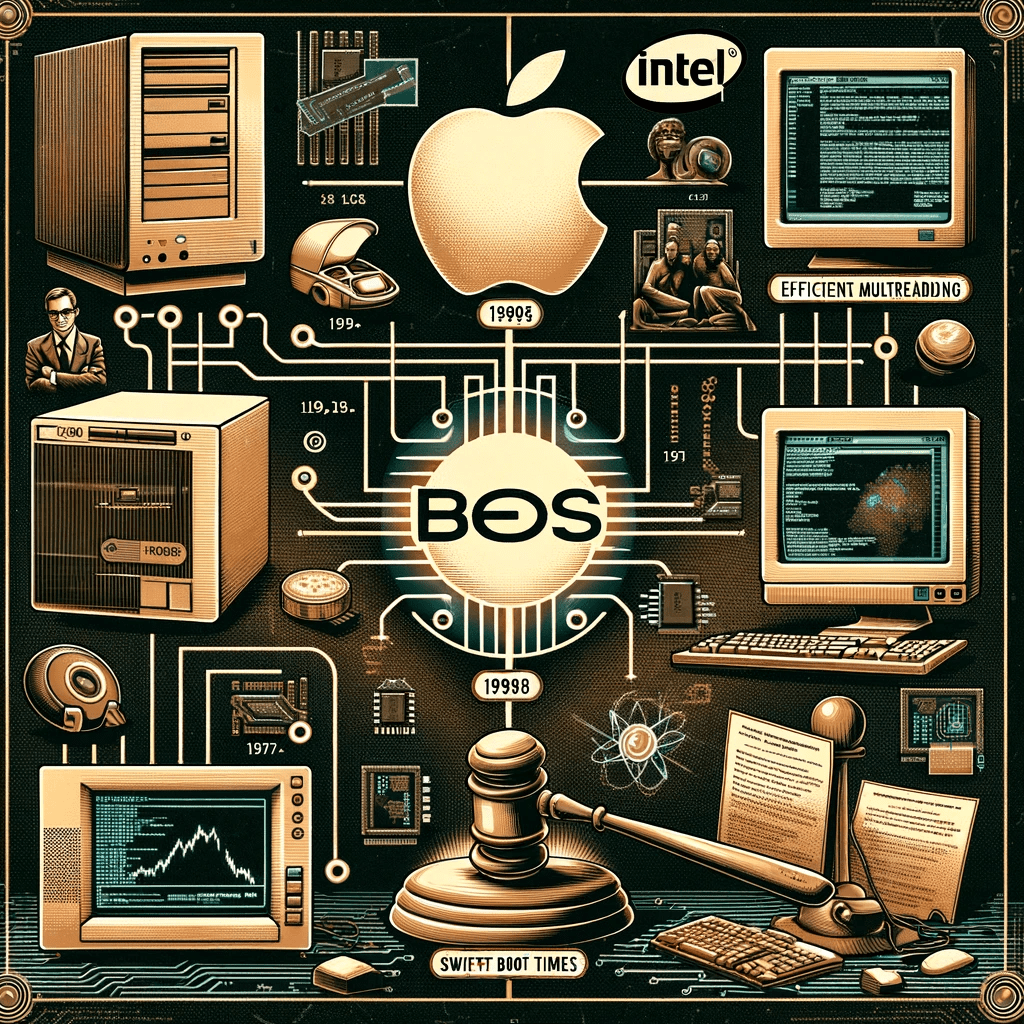BeOS: The Bold Challenger in the Operating System Arena
BeOS is a discontinued operating system for personal computers that was developed by Be Inc. It was first introduced in October 1995 for Be Inc.’s BeBox computer12. The driving forces behind Be were Jean-Louis Gassée, Apple’s former vice president of product development, and Steve Sakoman, creator of the Apple Newton2.
BeOS was designed for multitasking, multithreading, and a graphical user interface1. It was unique among the computer operating systems of the ’90s due to its lack of legacy code2. BeOS was equipped to handle digital audio and video more adeptly than the contemporary Macs and PCs2.
Despite its ahead-of-its-time features, BeOS failed to capture significant market share2. However, it still has a cult following 25 years later2. Enthusiasts have since created derivative operating systems including Haiku, which retains BeOS 5 compatibility1.
Revisiting BeOS, the ambitious operating system that once aspired to compete with giants like Windows and Mac. Last week’s feature on Lindows, a Linux-based OS with a Windows-reminiscent name aiming to rival Microsoft in the PC sector, sets the stage for another notable contender in the operating system arena.
Years before Lindows, there was BeOS, an innovative yet now nearly forgotten player in the rapidly evolving PC market. It still maintains a loyal fanbase. Created by former Apple executives Jean-Louis Gassée and Steve Sakoman, along with other Apple ex-employees, Be Incorporated was formed in 1990 with the vision of crafting a brand new operating system from scratch.
As detailed on BeUnited.org, BeOS’s journey encountered early challenges, notably when AT&T discontinued the Hobbit processor, initially chosen for Be Incorporated’s BeBox hardware. This led to a strategic shift to the PowerPC processor, mirroring what was used in Apple’s Macs at that time. Be Incorporated unveiled BeOS and the BeBox PC to developers in October 1995, a strategic launch shortly after Microsoft’s Windows 95 debut. The original BeBox featured two 66 MHz PowerPC 603 processors, and a subsequent 1996 version upgraded to two 133 MHz PowerPC 603e CPUs, per Apple Fandom Wiki. Yet, the true innovation lay in BeOS itself, uniquely architected without legacy code, enabling efficient multi-threading and multi-processing capabilities.
BeOS stood out for its advanced media and internet application performance, devoid of the burdens of older, more cumbersome code. HowToGeek highlights its swift boot time, clocking in at a mere 10 seconds, a remarkable achievement for a 1995 PC OS.
Be Incorporated eyed a major opportunity in 1996 to merge with Apple, which was then seeking a new OS to replace its aging Mac OS. However, the proposed $300 million sale price to Apple, as reported by Welcome to Low End Mac, was deemed too high, leading Apple to purchase NeXT and bring back Steve Jobs, marking an iconic turnaround in tech history.
After halting BeBox development in 1997, Be Incorporated refocused on enhancing BeOS, including adapting it for Intel’s x86 processors. The 2000 release of BeOS 5 featured compatibility to boot within Microsoft Windows. Despite these strides, Microsoft’s stronghold in the PC market remained firm, and Apple’s later ban on Mac clones using PowerPC further marginalized BeOS.
In a dramatic twist, Palm acquired Be Incorporated and BeOS for $11 million in August 2001. During the company’s dissolution in February 2002, Be Incorporated launched a lawsuit against Microsoft, as reported by CNN. The lawsuit accused Microsoft of illegal practices to prevent BeOS’s adoption by major PC makers, highlighting the pressure exerted on manufacturers to avoid dual-boot systems featuring BeOS and Windows.
By September 2003, Microsoft settled the lawsuit with Be Incorporated for $23.3 million without admitting any misconduct, as The New York Times reported.
Today, the open-source Haiku project continues the spirit of BeOS, focusing on emulating BeOS technologies and user experience. Though largely not based on original BeOS code, Haiku represents a modern tribute to a once-groundbreaking operating system that dared to challenge the status quo.
